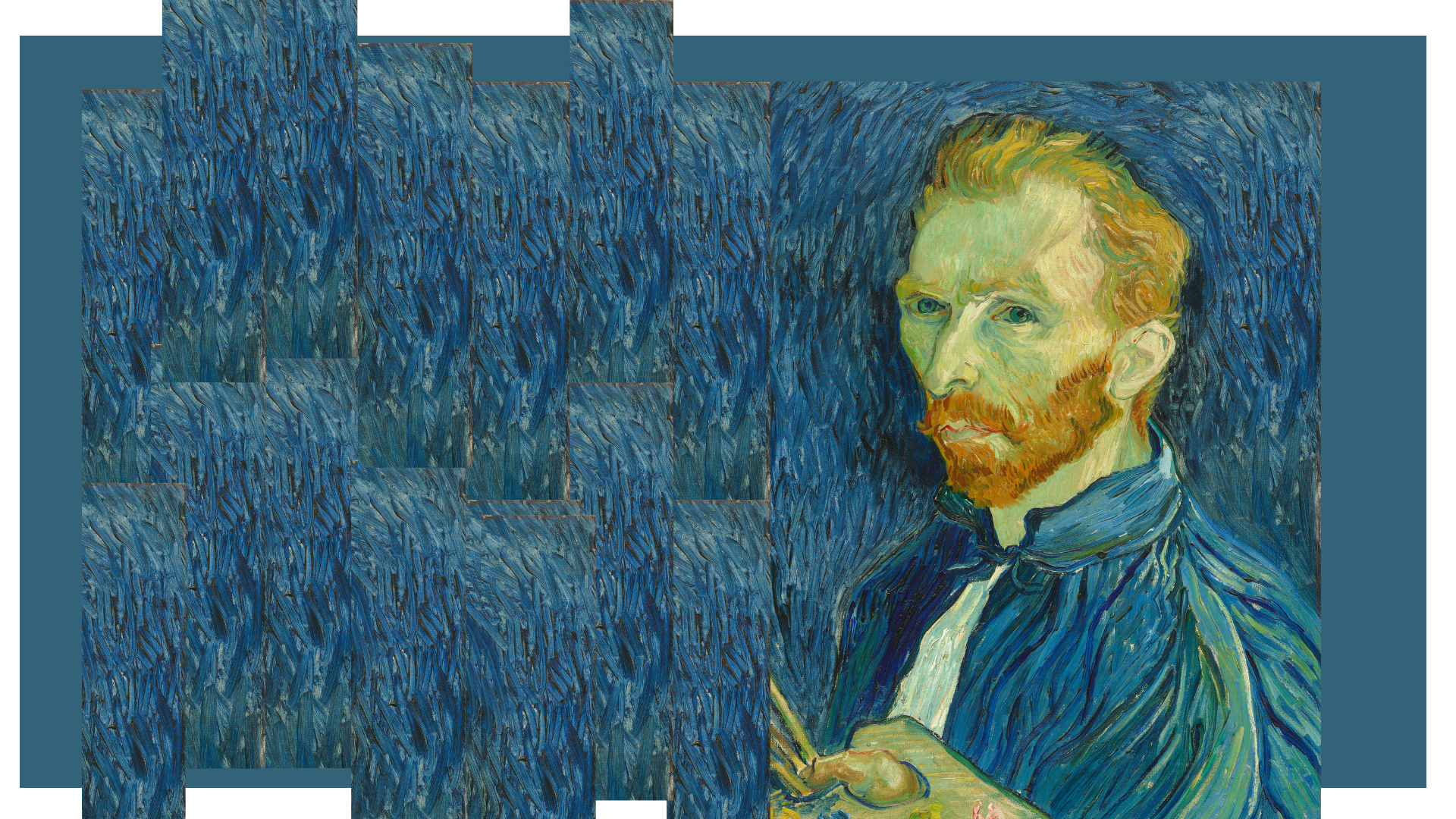6/1/22 Glenda Simpkins Hoffman
I recently went to The Van Gogh Exhibition: The Immersive Experience here in D.C. as it was highly recommended and because my husband and I love the art of Vincent Van Gogh. (FYI: the exhibit has been extended through July. You can see images and video, learn more, and get tickets at the link above if you are interested.)
After seeing the exhibit, I decided to google “What is an immersive experience?” This is what I learned: “An immersive experience refers to any experience facilitated by digital technology that attempts to imitate a physical world through a digital or simulated world by creating a surrounding sensory feeling thereby creating a sense of immersion…. Immersion is not an entirely new concept, and its original meaning pertains to the actual submersion of an object in water, which has later been translated to digital simulated experiences.”
While there are no actual Van Gogh paintings, you really are immersed in a sensory experience as you see images of his paintings and videos about his life while listening to music and Van Gogh quotes. There are several multidimensional exhibits including an eight-foot high bust of Van Gogh that has a constant flow of ever-changing familiar patterns and colors from his art projected on to it, especially of his numerous self-portraits. Another exhibit has a large vase against a background that continually morphs, highlighting his many still-life paintings of flower arrangements.
There is a huge room (larger than the size of our sanctuary) that you sit or stand in as you watch images projected on the four walls and floor. You are immersed in Van Gogh’s paintings for 30 minutes. I loved it so much, that if I had had more time, I would have done it all over again. The final opportunity is a virtual walk through Arles, France, using an oculus headset. This immersive experience really can’t be adequately described in writing, but it was truly marvelous!
While I did love this immersive experience and recommend doing it, I’m not writing to promote it. Rather, I’m writing about it because it connected with our sermon series on The Apostles’ Creed. Van Gogh believed in “God, the Father, make of heaven and earth, and in Jesus Christ, his only son our Lord….” Being immersed in his art and life for a few hours led me to thoughts of our great God and gratitude for our life in him.
Vincent Van Gogh was immersed in faith growing up as the son of a Dutch Reformed minister and wanted to become a pastor himself. Instead, he became a missionary to coal miners in Belgium. He immersed himself in a life of sacrifice and servanthood tending to the needs of the afflicted in the impoverished community there. However, his ineloquent speech, scruffy appearance, and overzealousness led to his being fired.
His desire to serve God did not dissipate but was redirected as he resolved to serve God through artistic expression. He wrote, “Your profession is not what brings home your weekly paycheck; your profession is what you’re put here on earth to do, with such passion and such intensity that it becomes spiritual in calling.”
Clearly, art was his calling, and he wanted to reflect something important. Again he wrote, “…to try to understand the real significance of what the great artists, the serious masters, tell us in their masterpieces, that leads to God. One man wrote or told it in a book, another in a picture.”
Van Gogh loved to immerse himself in and reflect God’s creation in his art. He said, “If you truly love nature, you will find beauty everywhere.” Van Gogh was immersed in the beauty of God’s creations and the brilliance of being gifted to capture it in his masterpieces like The Starry Night, Sunflowers, Irises, Wheat Field with Crows, and Haystacks.
He also painted many more explicitly Christian works, based on Bible stories. Paintings like The Good Samaritan, The Raising of Lazarus, The Sower, and The Sheaf Binder center on the person of Christ. Clearly, he also believed in “Jesus Christ, his only son our Lord.…”
Van Gogh understood that unconditional love of God extended to unconditional love for others. This is reflected in several of his quotes: “It is good to love many things, for therein lies the true strength, and whosoever loves much performs much, and can accomplish much, and what is done in love is well done.” “I feel that there is nothing more truly artistic than to love people.” “I will not live without love.”
There is so much goodness that has been left in Van Gogh’s life, work, and legacy. But there is another side as well. Shortly after returning from Belgium, Van Gogh had a nervous breakdown. This was the beginning of a life-long struggle with mental health and depression. Van Gogh was immersed in a condition that he did not choose and could not control, one that led to enormous pain and suffering and eventually to his suicide.
I was grateful that The Van Gogh Immersive Experience did not shy away from reflecting this part of Van Gogh’s life. As I was taking in this beauty reflected in his art, suddenly some images would turn to gray, even black, and begin to disintegrate depicting the experience of his mental illness. Throughout the exhibit, we heard this quote many times: “I put my heart and my soul into my work, and have lost my mind in the process.” Not as much was known or understood about mental health in his times. People today have tried to diagnose his condition, but what matters is that he did suffer.
I saw this exhibit in May, which was Mental Health Awareness Month. I thought it important to write about this as millions of Americans and others around the world are immersed in a struggle with mental illness. I’m grateful for a month set aside to raise awareness to help fight stigma, provide support, educate the public, and advocate for policies that support people with mental illness and their families. The need is real because the suffering is real. It has been for a long time. Learning more is one way we can love and care for “the least of these” (Matthew 25:40) as Jesus made clear we are to do.
My visit to an immersive art exhibit reminded me of the unimaginable greatness of our God, the goodness and joy of living in the world he created, and the remarkable gifts and talents of one of his beloved children who has left so much beauty to be enjoyed and appreciated. But it was also a solemn reminder that we live in a broken and sinful world where suffering and pain are real and cannot be escaped and must not be ignored. This is the reality of the life we are immersed in right here and now. Learning to live in this paradox is part of our calling in this world as we follow our Lord Jesus.


